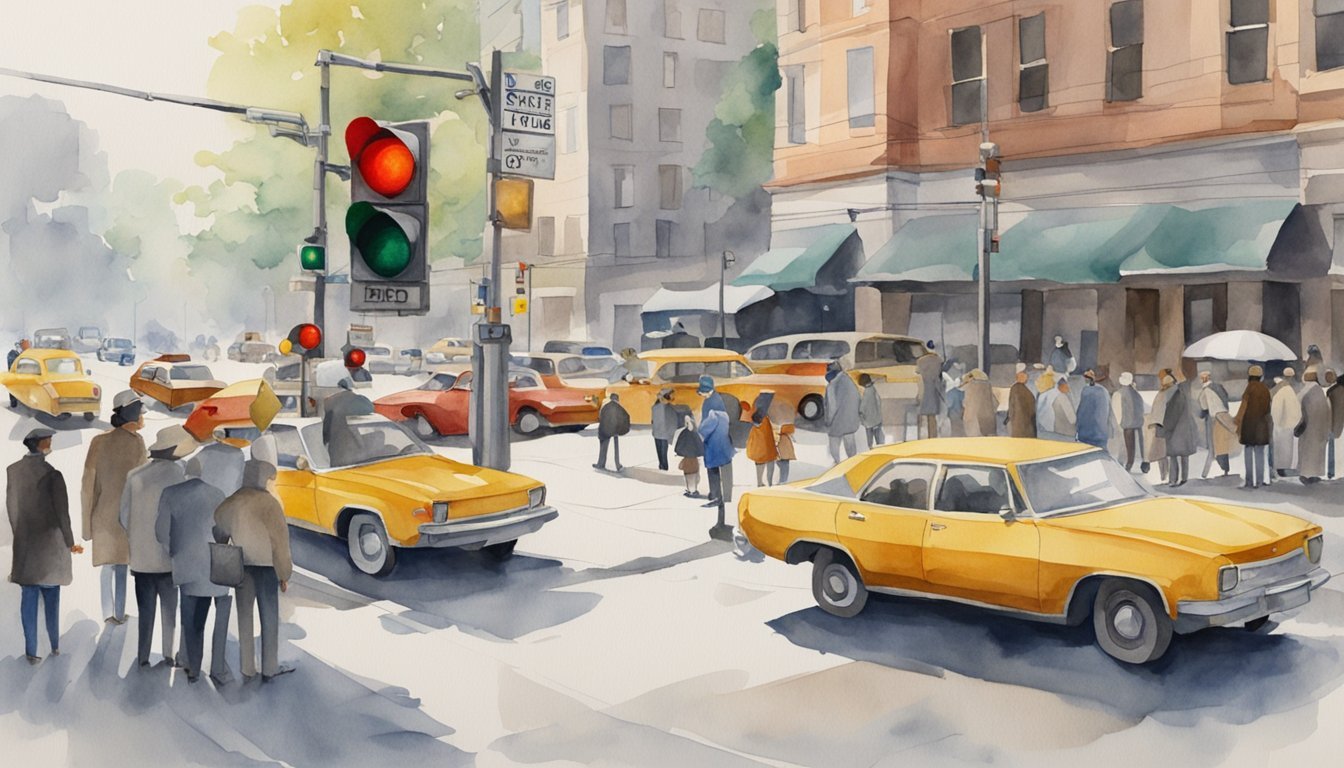The Origin and Inventor of the Traffic Light
Garrett Morgan: A Pioneering Inventor
Garrett Morgan, an African American inventor and entrepreneur, who was born in Paris, Kentucky, on March 4, 1877, played a significant role in the development of traffic signals. Earlier in his career, he worked as a sewing-machine mechanic and invented the safety hood, a breathing device that served as a forerunner to the modern gas mask.
Morgan moved to Ohio in search of better opportunities and eventually settled in Cleveland. There, he continued his inventive pursuits and activism, working as a handyman while filing patents for various safety devices. One of his most notable inventions was the three-position traffic signal.
Early Traffic Signal Concepts
Before Morgan’s traffic signal, early concepts of traffic lights were already being employed. The first traffic lights were introduced in December 1868 on Parliament Square in London, aiming to reduce the need for police officers to control traffic manually. Then in 1912, Lester Farnsworth Wire, a police officer in Salt Lake City, Utah, invented the first electric traffic light using red and green lights.
The Three-Position Traffic Signal
Morgan’s key innovation was the three-position traffic signal, which featured an extra “amber” light between the red and green lights, providing a valuable pause between stop and go instructions. This invention significantly improved safety and efficiency at intersections throughout the nation. Morgan filed a patent for his invention in 1922, which was later granted in 1923.
General Electric saw the potential of Morgan’s traffic signal and acquired his patent for $40,000, as his innovation contributed greatly to the improvement of automobile traffic control. Astonishingly, Morgan’s ingenuity and dedication to safety have had a profound impact on modern traffic systems, inspiring numerous innovations in traffic management and safety that continue to benefit people around the world.
Impact and Evolution of Traffic Signals

Improving Safety and Traffic Management
The invention of traffic lights aimed to reduce accidents at intersections and provide a more efficient method of managing traffic. The first traffic signals were mechanical and resembled a railway signaling system. J.P. Knight invented these in London in 1868, primarily to control the flow of horse-drawn carriages near the Houses of Parliament1.
By 1912, Lester Wire, a police officer in Salt Lake City, Utah, invented the first electric traffic light using red and green lights2. This innovation reduced the need for police officers or traffic control personnel and aimed to maintain smooth traffic flow.
In the early 20th century, African American inventor Garrett Morgan noticed a flaw in the existing traffic signals that resulted in collisions when vehicles failed to stop in time. He added an amber light to the signal system, allowing drivers to prepare for a stop, which ultimately increased traffic safety3.
Traffic lights evolved to ensure pedestrians’ safety, such as integrating a walk or don’t walk system, helping pedestrians time their crossing to avoid conflicts with vehicles4. Today, advanced technology like sensors and computer algorithms predicts traffic flow and adjusts signal timings accordingly, optimizing vehicular and pedestrian movement through intersections5.
Advancements Beyond Garrett Morgan’s Design
While Garrett Morgan’s three-color traffic light system is widely recognized as a significant invention to improve traffic safety, other engineers and inventors have further developed traffic signal technology. For example, Charles Adler Jr. introduced the first actuated traffic signal in the United States in 19286. This system allowed drivers to honk their horns to change the traffic signal, a precursor to modern traffic signal detectors that respond to the presence of vehicles.
Traffic signals now incorporate various technologies and features, such as countdown timers and exclusive pedestrian phases, to improve safety and efficiency for all road users.
Global Adoption and Standardization
Following the introduction of traffic signals in London and their subsequent adoption in the United States, countries worldwide gradually implemented this technology to improve traffic management7. Traffic signal systems have since become standardized globally, with variations in design and operation tailored to local contexts.
In Paris, for example, smaller traffic signals mounted at eye level cater to drivers in a bustling urban environment8. Meanwhile, countries like the United States have adopted national standards for the design, installation, and operation of traffic signals to ensure consistency, safety, and efficiency9.
Thanks to the pioneers of traffic signal technology like Garrett Morgan, Lester Wire, and J.P. Knight, traffic lights have become essential to contemporary urban life. They continue to shape urban environments and have played a vital role in reducing traffic collisions and improving traffic management across the globe.

